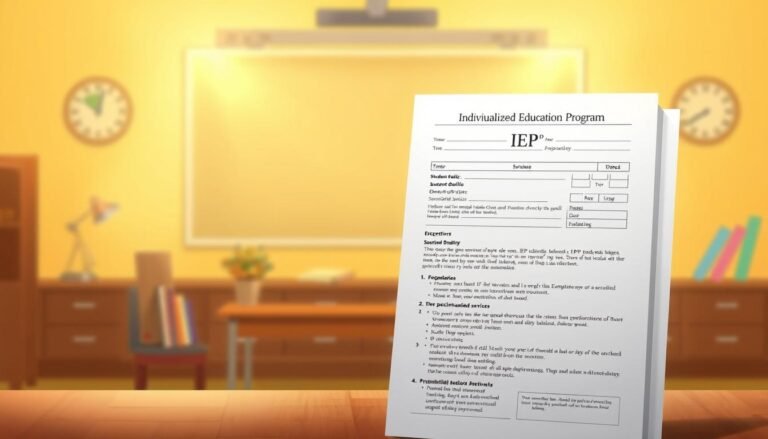
Math Doesn’t Have to Be Hard: Understanding Dyscalculia Symptoms in Students
Introduction
Mathematics often evokes a sense of dread for many students, and for those with dyscalculia, a specific learning difficulty, this fear can be even more pronounced. However, it’s essential to understand that math doesn’t have to be hard, even for students struggling with dyscalculia. By identifying symptoms early and employing effective strategies, educators and parents can provide the support these students need.
In this article, we will dive deep into dyscalculia, revealing its symptoms, providing insightful case studies, and exploring actionable ways to make math more accessible. Join us as we illuminate the realities of dyscalculia, ensuring that every student has the opportunity to succeed in math.
Understanding Dyscalculia
What is Dyscalculia?
Dyscalculia is a learning disorder that affects an individual’s ability to understand numbers and perform mathematical calculations. Similar to dyslexia, which impacts reading, dyscalculia often goes unnoticed. Early detection is crucial, as it allows for timely interventions that can significantly improve a student’s relationship with math.
Common Symptoms of Dyscalculia
Understanding the symptoms of dyscalculia is the first step in providing the necessary support. Here are some common signs:
- Difficulty Understanding Numbers: Students may struggle to comprehend what numbers represent or how they relate to each other.
- Challenges in Math Computation: Basic arithmetic operations such as addition, subtraction, multiplication, and division can be particularly difficult.
- Difficulty with Time and Measurement: Students may confuse time; for example, reading clocks or understanding timelines.
- Poor Spatial Awareness: These students may find it challenging to visualize mathematical concepts, make sense of graphs, or understand geometric shapes.
- Problems with Sequencing: Dyscalculic students may struggle to remember sequences of steps in problem-solving.
Table 1: Symptoms of Dyscalculia
| Symptom | Description |
|---|---|
| Difficulty Understanding Numbers | Struggles with recognizing and comprehending the value of numbers |
| Challenges in Math Computation | Issues with basic arithmetic and performing operations |
| Difficulty with Time and Measurement | Confusion surrounding time concepts and measuring quantities |
| Poor Spatial Awareness | Difficulty visualizing math concepts and understanding spatial relations |
| Problems with Sequencing | Trouble remembering ordered steps in calculations and problem-solving |
Case Study: Emily’s Journey with Dyscalculia
To illustrate the impact of dyscalculia, let’s explore the case of Emily, a bright student who faced significant challenges in math but ultimately thrived with the right strategies.
Background
Emily, a 10-year-old fourth-grader, had always enjoyed school, but she dreaded math time. Her teachers noted that she often struggled to grasp basic math concepts, and despite her enthusiasm, her test scores reflected her difficulties.
Identification and Support
After a series of evaluations, Emily was diagnosed with dyscalculia. Armed with this knowledge, her school implemented targeted interventions, including:
- One-on-one Tutoring: Emily received personalized tutoring sessions focusing on foundational math skills, allowing her to progress at her own pace.
- Visual Learning Tools: The use of visual aids such as number lines and manipulatives helped Emily visualize mathematical problems more easily.
- Encouragement and Confidence Building: Teachers and parents worked together to provide positive reinforcement, celebrating small victories.
Results and Takeaway
Over time, Emily not only improved her math skills but also began to enjoy the subject. Her story exemplifies how understanding dyscalculia symptoms in students can lead to effective interventions, proving that math doesn’t have to be hard.
Strategies for Supporting Students with Dyscalculia
1. Promote a Positive Attitude Towards Math
Encouraging a growth mindset can significantly impact a student’s perception of math. Remind students that making mistakes is part of the learning process. Here are some ways to create a supportive environment:
- Use Positive Language: Shift focus from “I can’t do this” to “I will learn how to do this.”
- Celebrate Small Wins: Acknowledge progress to boost confidence.
2. Implement Multisensory Learning Techniques
Incorporating multiple senses can help strengthen understanding:
- Visual Aids: Use charts, diagrams, and interactive apps to aid comprehension.
- Tactile Learning: Introduce manipulatives, allowing students to physically interact with numbers.
Chart 1: Effective Teaching Methods for Dyscalculia
| Method | Description |
|---|---|
| Multisensory Learning | Engaging multiple senses to enhance understanding |
| Visual Aids | Utilizing charts and diagrams to present information clearly |
| Tactile Learning | Hands-on activities to explore mathematical concepts |
3. Offer Ongoing Assessment and Feedback
Continuous feedback allows educators to fine-tune their instructional methods:
- Frequent Check-ins: Regular assessments help track progress and identify areas needing reinforcement.
- Adjust Strategies: Be flexible and willing to adapt teaching methods based on individual needs.
4. Utilize Technology
There are numerous apps and software programs designed to support students with dyscalculia. Tools that allow for interactive problem-solving can make math feel less daunting.
- Games and Apps: Engaging math games encourage practice in a fun and low-stress environment.
5. Collaborate with Parents
Working closely with families can provide a well-rounded support system:
- Share Strategies: Educators can guide parents on how to reinforce learning at home.
- Encourage Open Communication: Regular updates ensure everyone is on the same page regarding the child’s progress.
The Role of Educators and Parents
Educators: A Vital Support System
Teachers play a crucial role in identifying and supporting students with dyscalculia. Professional development opportunities can equip educators with the tools to recognize dyscalculia symptoms and adapt their classroom methodologies accordingly.
Parents: Partners in Learning
Parents can help by:
- Creating a Math-Friendly Environment: Incorporate math into daily routines, such as cooking or shopping.
- Seeking Resources: Explore books, websites, and local resources dedicated to learning disabilities.
Conclusion
In summary, understanding dyscalculia symptoms in students is essential for creating an inclusive educational environment where every child has the chance to succeed in math. Remember, math doesn’t have to be hard; it can be a source of joy and discovery with the right support and tools.
By identifying symptoms early, employing effective strategies, and fostering a collaborative environment, we can make a significant difference in the lives of students struggling with dyscalculia. Let’s create a world where every student sees math as an accessible and enjoyable subject, rather than a daunting challenge.
FAQs
1. What is dyscalculia?
Dyscalculia is a specific learning disorder that affects an individual’s ability to understand and manipulate numbers.
2. How can I tell if my child has dyscalculia?
Look for symptoms such as difficulty understanding numbers, challenges in basic arithmetic, and confusion with time and measurement.
3. What strategies can help my child with dyscalculia?
Employ multisensory learning techniques, use visual aids, and promote a positive attitude toward math to support your child.
4. Is dyscalculia hereditary?
Research suggests that dyscalculia can run in families, indicating a potential genetic component.
5. Can students with dyscalculia be successful in math?
Absolutely! With the right interventions and support, students with dyscalculia can thrive in math.
6. What resources are available for parents and educators?
There are many books, websites, and organizations dedicated to dyscalculia that offer support, resources, and community connections.
By understanding and addressing dyscalculia symptoms in students, we ensure that math doesn’t have to be hard. Together, we can pave the way for young learners to conquer their math fears and discover their love for learning, one number at a time.
















